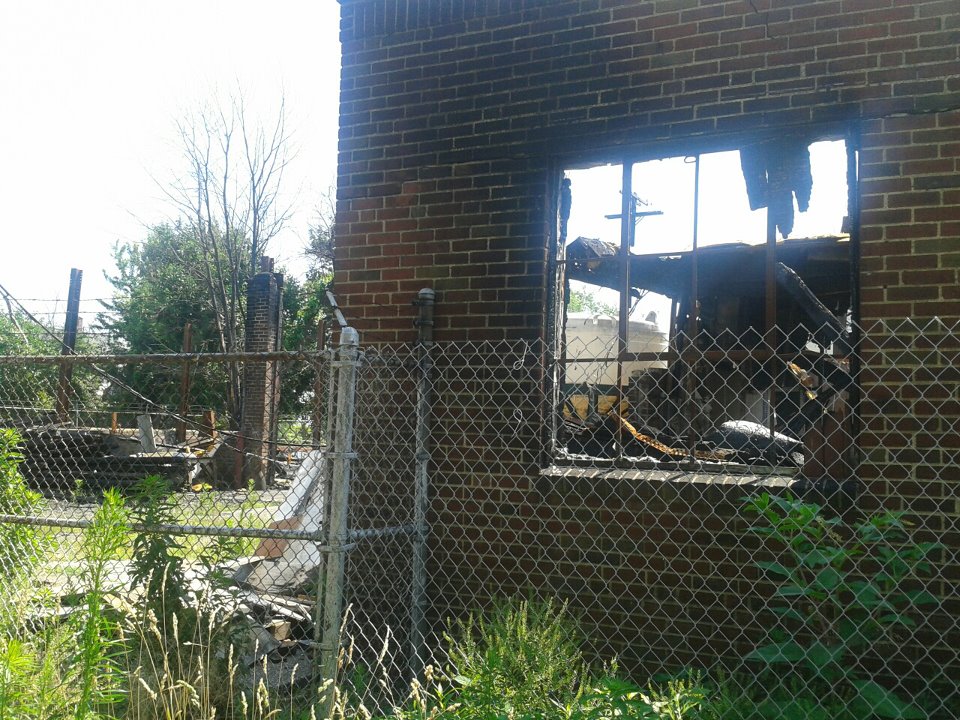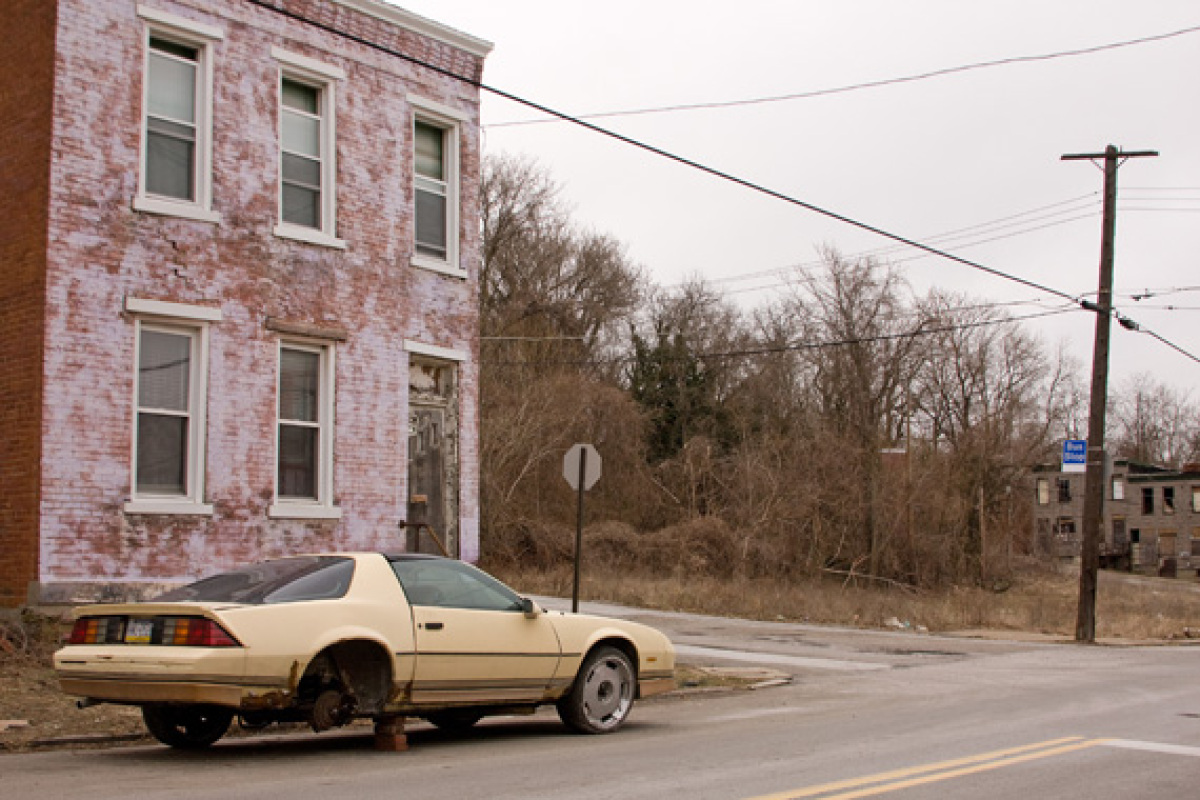Detroit's vacancy is burning again. The effect is orange nights and a fire department that can do little except wait for the flames to burn out. On the surface, such scenes reiterate the narrative of a city in the grips of Mad-Maxian chaos: a post-apocalyptic un-civilization. But that's not the whole of the story. In fact there's a certain order in Detroit's destruction. But to find it you have to get at the more hidden components of the post-industrial narrative.

Let me step back for a moment and talk about psychology and the city, and why it is important in the field of city remaking.
When we talk about building cities we limit the conversation to a city's "body"--or its buildings, streets, etc.--or it's "head", i.e., its collection of smart, talented folks. Rarely do we try to understand and plan for a city's "heart", or its emotion. This is unfortunate, because a city's hang-ups and anxieties can affect its development no less than a lack of human capital. In fact collective irrationality does and will kill the best of intentions. Or as psychoanalyst Carl Jung put it: "Until you make the unconscious conscious, it will direct your life and you will call it fate."
The fate of Detroit and other Rust Belt cities has been driven by the prospect of loss. This is a human thing--you know, the proverbial skull grinning at the banquet. But it's more hidden usually. There's enough in life to drown existential angst out. Yet the prospect of loss has been unusually close to the surface in post-industrial settings, and it has had a massive effect on how the Rust Belt has physically played out.
Let's begin with flight. Disinvestment beget disinvestment and people leaving became the narrative of people leaving. After long a kind of implicit psychology took hold in the Rust Belt concerned with losing. This loss is real in the decay of the Rust Belt city and is demonstrated perfectly in Randy Fox's recent photo essay entitled "Pittsburgh's Hill District: The Death of a Dream".

Photo credit: Randy Fox
People dealt with losing and the prospects of loss differently. Many left to where "life" was said to be. Enter suburbia. It soothed the realities of loss in the form of space, yards, silence, uniformity in design, and a better overall illusion of control. Over the years the illusion only got "better" with sprawl; that is, more space, bigger yards, more silence. Yet sprawl has in itself become a kind of death spiral, especially for shrinking city regions that can't support its own footprint. And this says nothing of sprawl's cancerous effect on the social fabric of a region that prides itself on the importance of culture. This effect was beautifully lyricized by Arcade Fire in the song "Sprawl II":
Living in the sprawl, dead shopping malls rise
Like mountains beyond mountains
And there's no end in sight
I need the darkness, someone please cut the lights
But not everybody leaves, and for those that stay many literally fight the decay. Thus the most recent fires in Detroit, not to mention Devil's Night, or the annual "let's torch houses" Halloween eve extravaganza that self-immolates the city. Beyond fire, Detroit has also been known to foster DIY house demolishers. Some for scrap metal. Others just to release the aggression tied to the helplessness associated with persistently blighted conditions. From an article "Detroit Disappeared":
Disgusted by waiting for the city to demolish houses that had been on the to-be-wrecked list for over a year...posses of self-appointed "house-busters" had descended upon three long-vacant structures, one of them a crack haven and the others fire-damaged rat warrens. Jubilantly bashing away with sledge hammers, crow bars, baseball bats, and their own vans, they toppled the hated houses and hauled the debris into the middle of the street, smugly forcing the city to cart it off. The scene was one of lawless frenzy, crossed with some sort of neighborhood demolition-industry recruitment drive. "I saw them working and there was nothing else to do so I came to help," nine-year-old Roscoe Childs explained when reporters caught up with him. Others were simply aglow with that primal wrecking euphoria. "I'm ecstatic," 24-year-old Karen Reeve said. "I'm on top of the world right now."
Beyond DIY demolitions and arsons, local governments too have taken to fighting blight with mass demolitions. In many respects, both the sanctioned and unsanctioned fight against blight is reasoned. But much like flight as a reaction to loss, various unintended consequences arise related to the massive burning and demolishing of a city's embodied built history, especially given the recent trend of rebuilding America around old, architecturally significant urban cores.
What could be done otherwise?
Well, by simply framing the issue within a psychological context, we get to understanding the often chaotic and irrational urban development patterns of the Rust Belt defined by destroying quality and spreading sprawl's ill-worth. And we can now bring psychological principles into the equation to help abut the madness. Like, for instance, examining if there are alternatives to the fight and flight response that has dictated the Rust Belt narrative for generations.
For example, in a recent Psychology Today article, psychologist Jim Taylor asked this question: What 21st-century response can we replace the fight-or-flight reaction with? Taylor writes that we need to go beyond primitive responses to threat defined by fear, gloom, and panic--no doubt three feelings threaded into post-industrial story. Taylor writes:
Many of today's threats can't be fought because there is no readily confrontable enemy. And they can't be run away from because many are diffuse rather than localized; you can run, but you can't hide. And burying your head in the sand may work for ostriches, but for humans, it leaves a very important part of the body exposed!
Taylor goes on:
This new survival instinct would be the antithesis of the fight-or-flight reaction. Instead of overwhelming and uncontrollable fear, a threat would trigger courage, which isn't the absence of fear--it's impossible to not to experience fear in the face of a threat--but rather the ability to confront the fear and act proactively and deliberately despite it. It involves being able to manage negative emotions, such as fear, anger, frustration, and despair, and to generate helpful emotions, including hope, inspiration, excitement, and pride.
In other words--in the case of the Rust Belt condition--a process of understanding why the region has decayed is necessary, and with that hopefully a healthier collective psychological state can arise in which folks can let go of the past so there's more to ruin than fear and emptiness, but rather: resilience and opportunity.
But first, emotion must start entering into the conversation of how it is we are forming our cities. Otherwise, our intentions at being well-intended will continually bend to that part of the dark we think we are fleeing or fighting.
